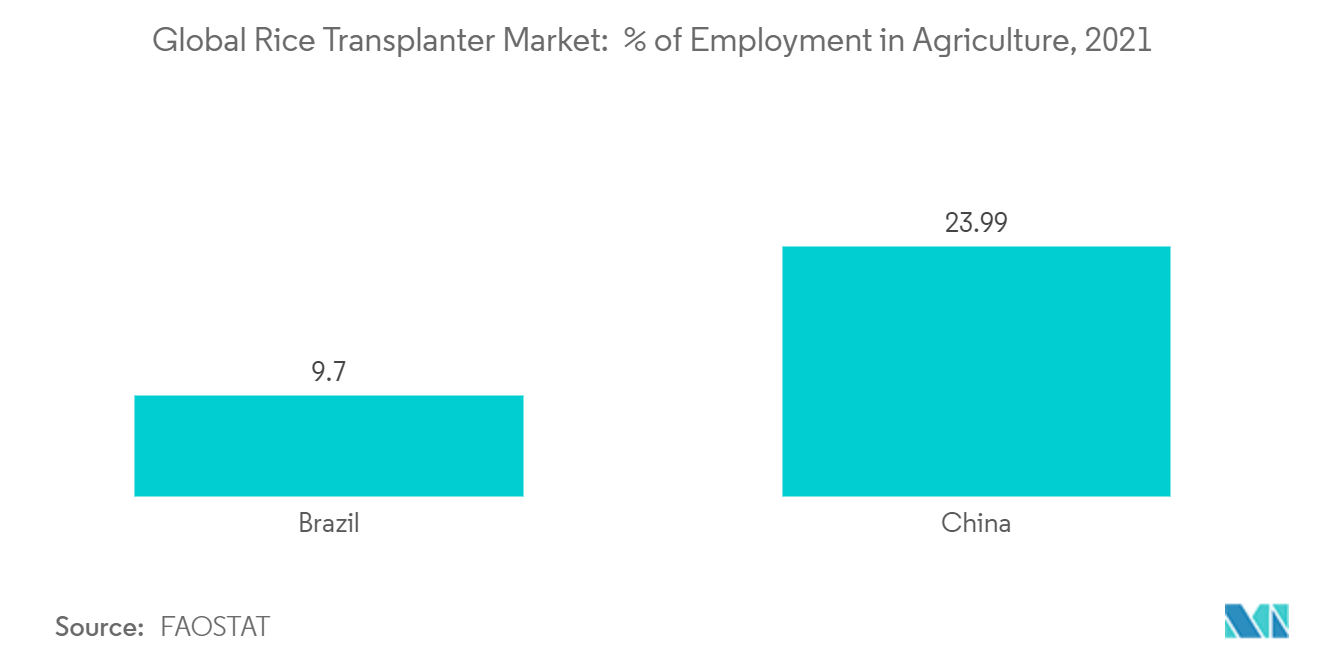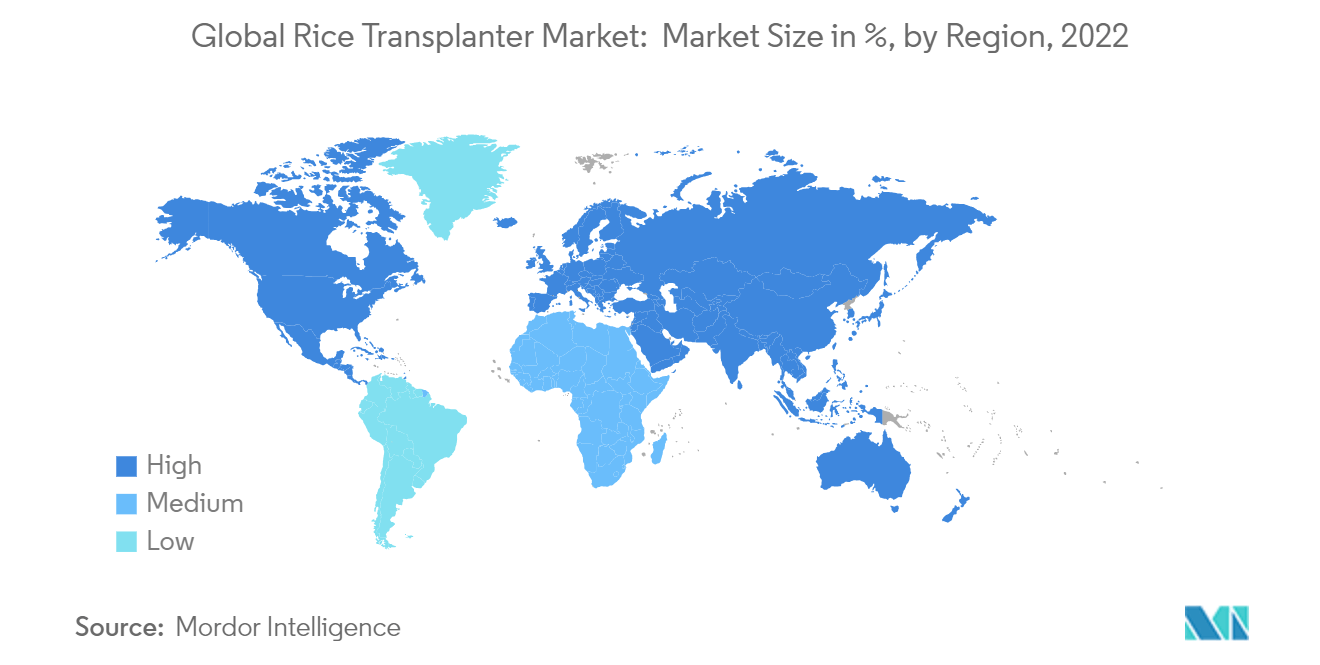Market Trends of Global Rice Transplanter Industry
Decline in Farm Labor is Driving the Market
- Developing economies have larger percentages of the population dependent on agriculture, decreasing over time as many people have migrated to the urban area every year. According to Food and Agriculture Organization (FAO), employment in the agriculture sector declined drastically in countries like China in 2021 by 23.9% compared to the previous year, with 24.4%. This is primarily due to agricultural machinery ruling under the name of modern agriculture in developed countries. While more than two-thirds of the population in poor countries work in agriculture, less than 5% of the population does in rich countries. This is making opportunity for the players to produce new products in the market, hence boosting the market's growth in future years.
- According to data from the International Labor Organization, worldwide, the percentage of people who work in agriculture will have dropped to 26% in 2022. In many developed countries, including the United States, the average age of a farmer is 60. Still, the average age is rising as the rural youth has branched out from their countries to seek a life in the city. This pushes the machinery market to grow in developed countries during the forecast period.
- According to the Indian Council of Food and Agriculture, the percentage of agriculture workers in India is estimated to decline by 25.7% in 2050, which has led to increasing demand for agricultural equipment in the country. Hence, the rice transplanter market demand will increase during the forecast period.

Asia-Pacific Dominates the Market
- Rice is the staple crop for many Asian countries like China and India, with almost 90% of the world's rice grown in the Asia Pacific. The growing population in Asian countries is raising the demand for food, especially in countries like India which is the most populated country in the region.
- According to the World Population Review (WPR), India's population was 1.41 billion in 2022. This increase in population has increased the demand for food in the region. Rice is the main staple food in more than 100 countries, and enhancement in rice production is crucial to ending hunger, especially in Asia.
- Small farmers in India usually perform rice transplanting manually. Manual paddy transplanting required about 238 man hours per hectare. The performance of different rice establishment methods was evaluated, and the maximum grain productivity was found under the system of rice intensification method followed by mechanical transplanter. Reducing manpower availability for agricultural work has increased the availability of mechanical transplanters in India.
- China is the world's largest producer of rice, making up 30% of global rice production, which deploys various methods like manual or mechanical. Manual transplanting is declining in rural areas due to a lack of skilled labor. It is common in these areas with smaller land due to high populations and higher rates of available labor. China dominates the market in this region with a major market share as it exports paddy to other Asian countries. Nearly every province in China plants rice and produces more than one-fourth of the world's rice annually. Farmers in India prefer manually operated machines, while China and countries in Asia witness a higher demand for riding type of rice transplanter machines.


